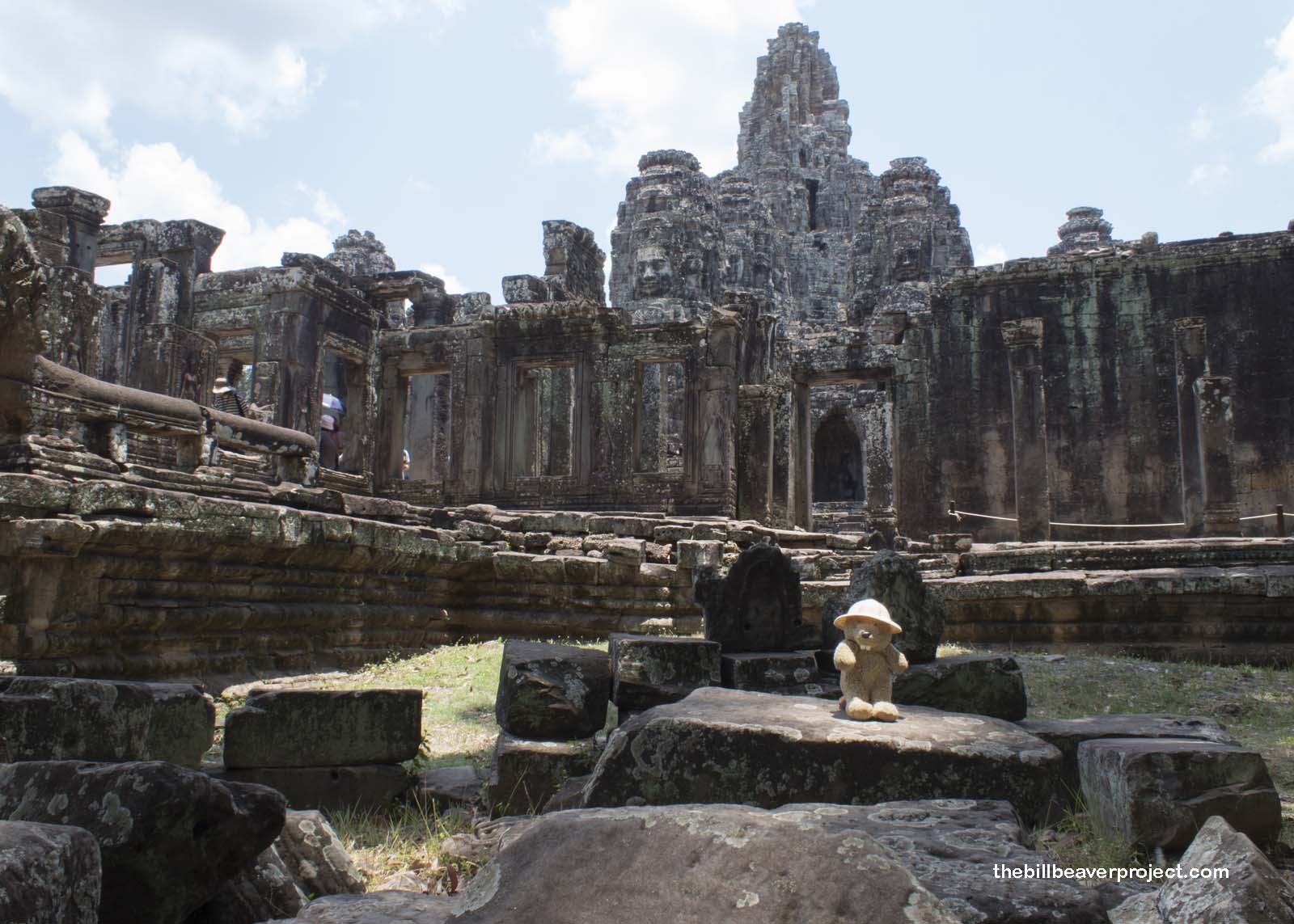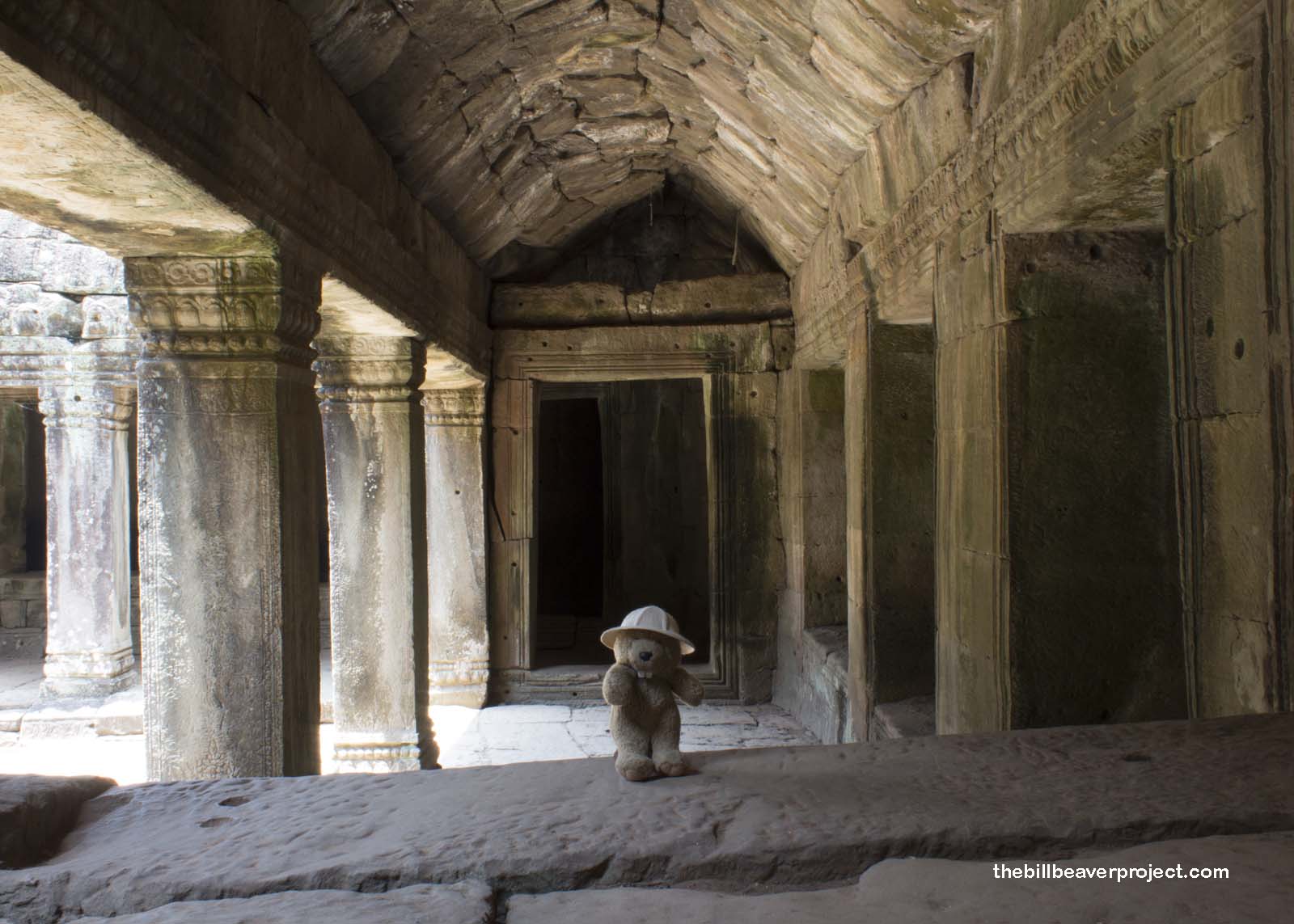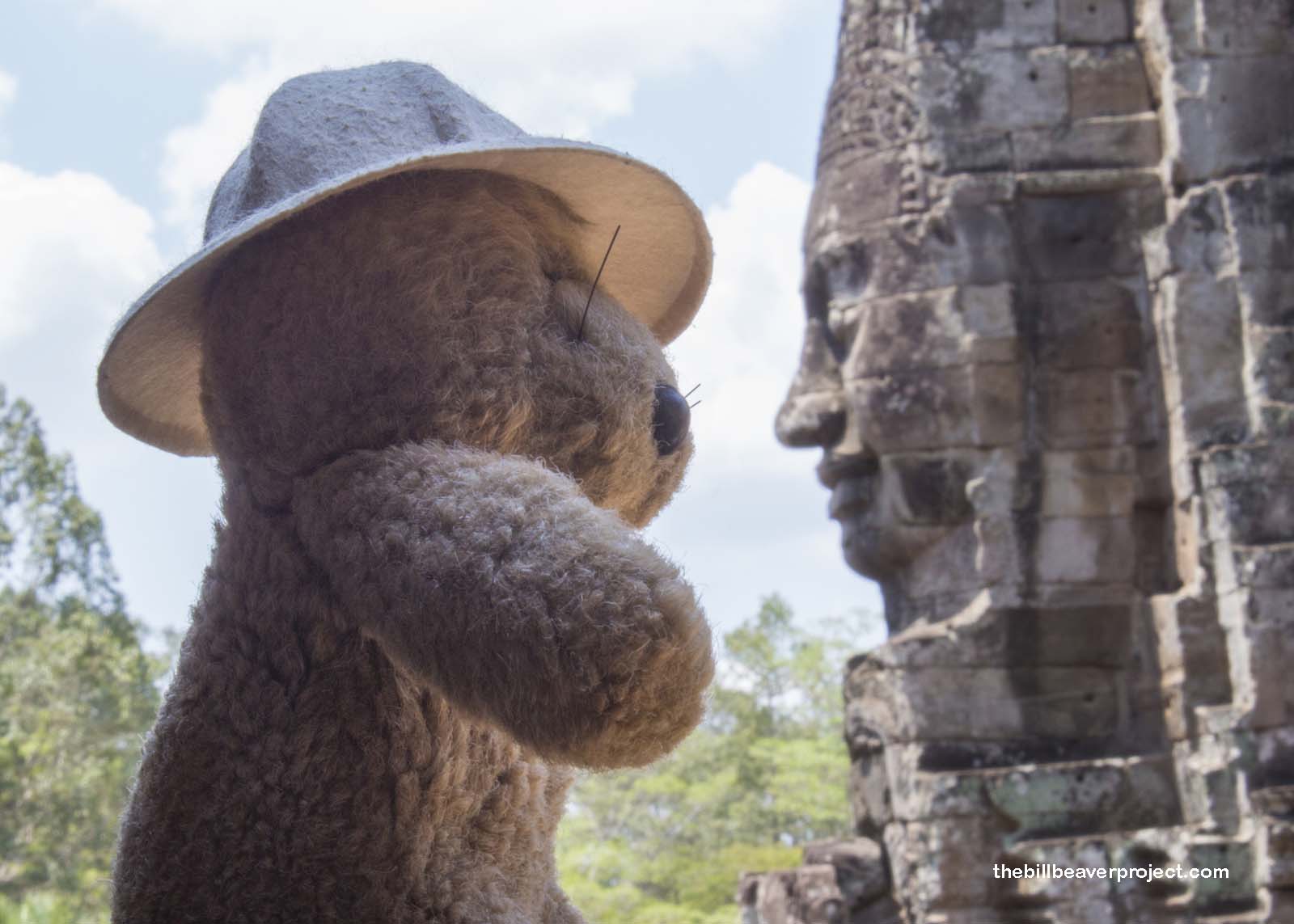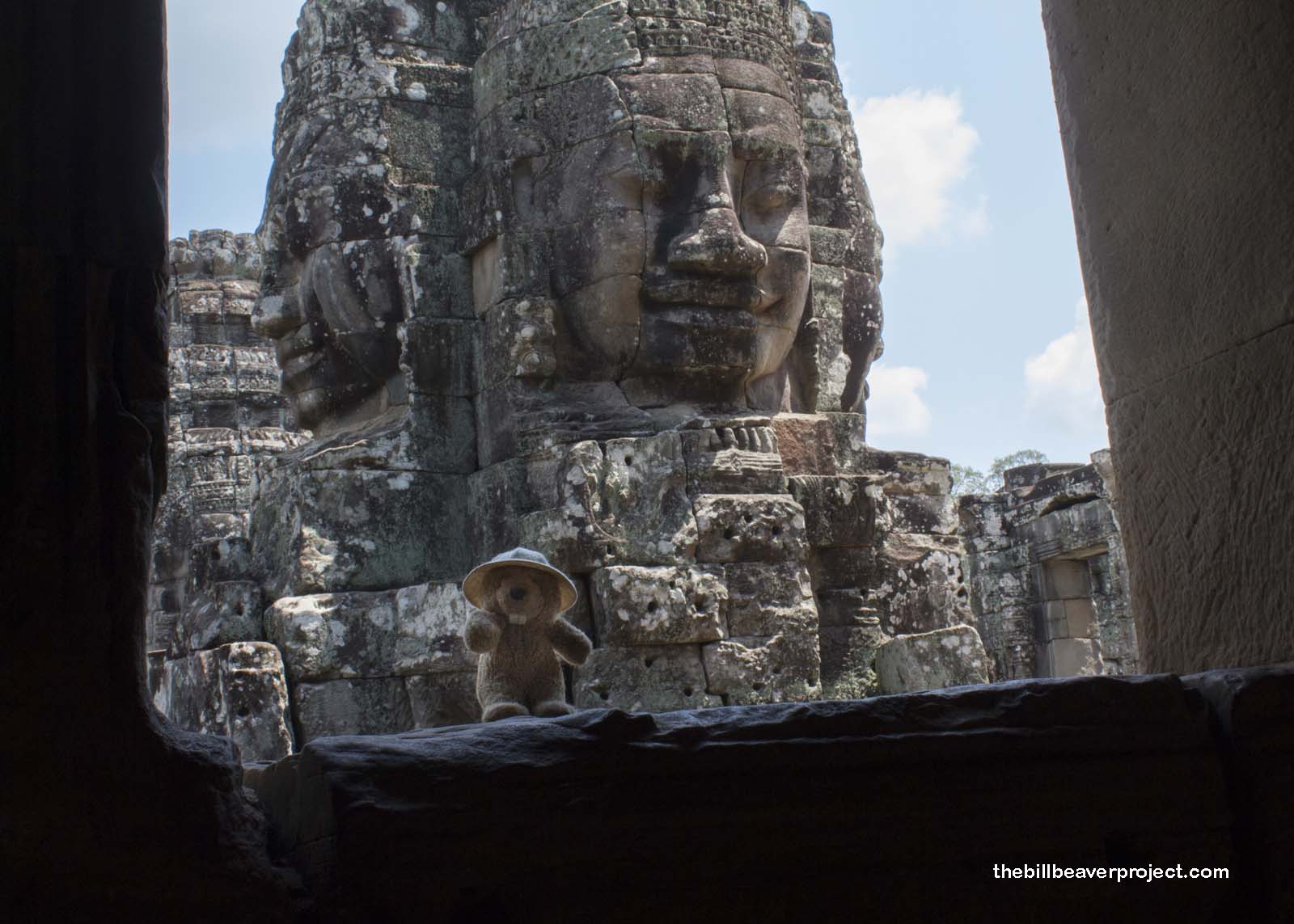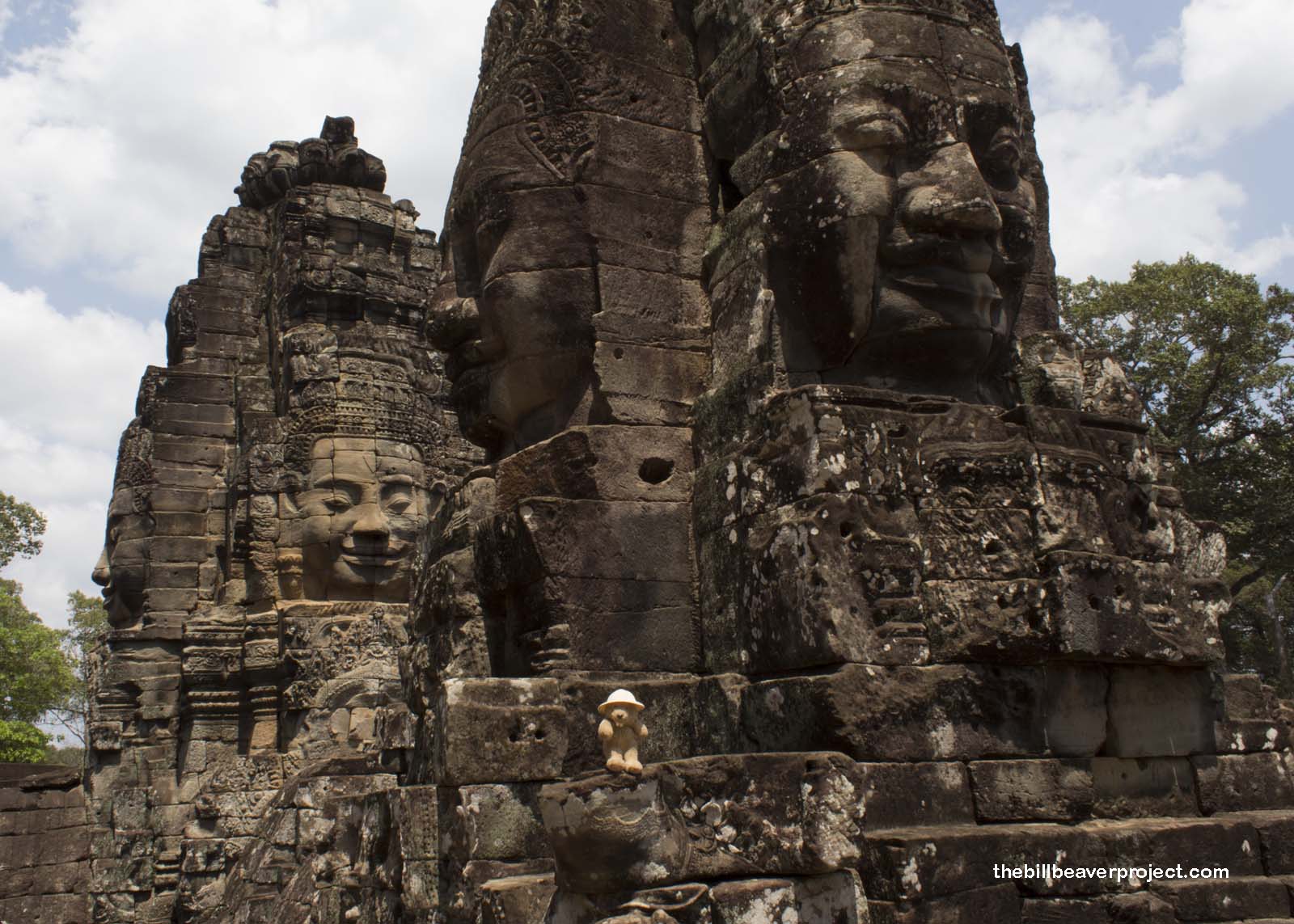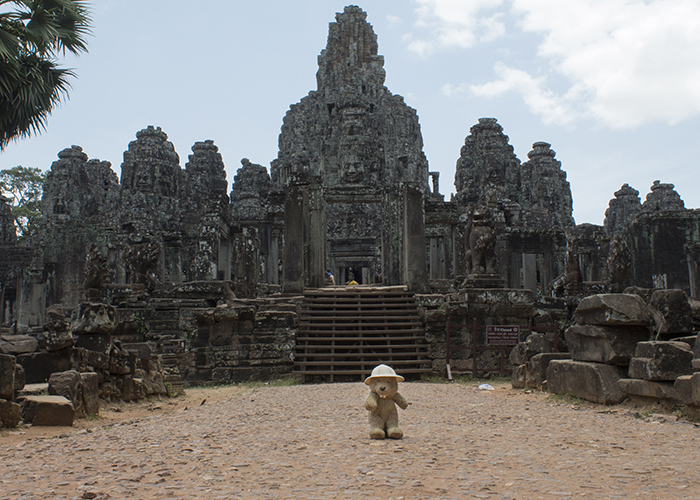| What makes it historical? |
The faces of Bayon are shrouded in mystery! Built around 1190 AD by King Jayavarman VII, it’s not clear whether the faces at each cardinal direction represent the bodhisattva of compassion, Lokeśvara (a.k.a. Avalokiteśvara or Guanyin), or the king himself! The myth is that these giant stone faces terrify snakes and keep them away!
From above, Bayon is shaped like a universal mandala design called a yantra! Its towers, built from limestone quarried at nearby Phnom Kulen, represent the sacred mountain of Meru, the center of the world in Buddhist mythology. It made sense that this symbol would be placed at the center of Jayavarman’s capital city of Angkor Thom!
Named for a banyan tree, Bayon not only served religious purposes but also depicted Khmer history through carved murals along the perimeter. These 11,000 carvings give insights into the war between the Khmer army and the invading forces from Java during the 8th century. Later additions portrayed important events from Hindu mythology, such as the churning of the Sea of Milk! |
